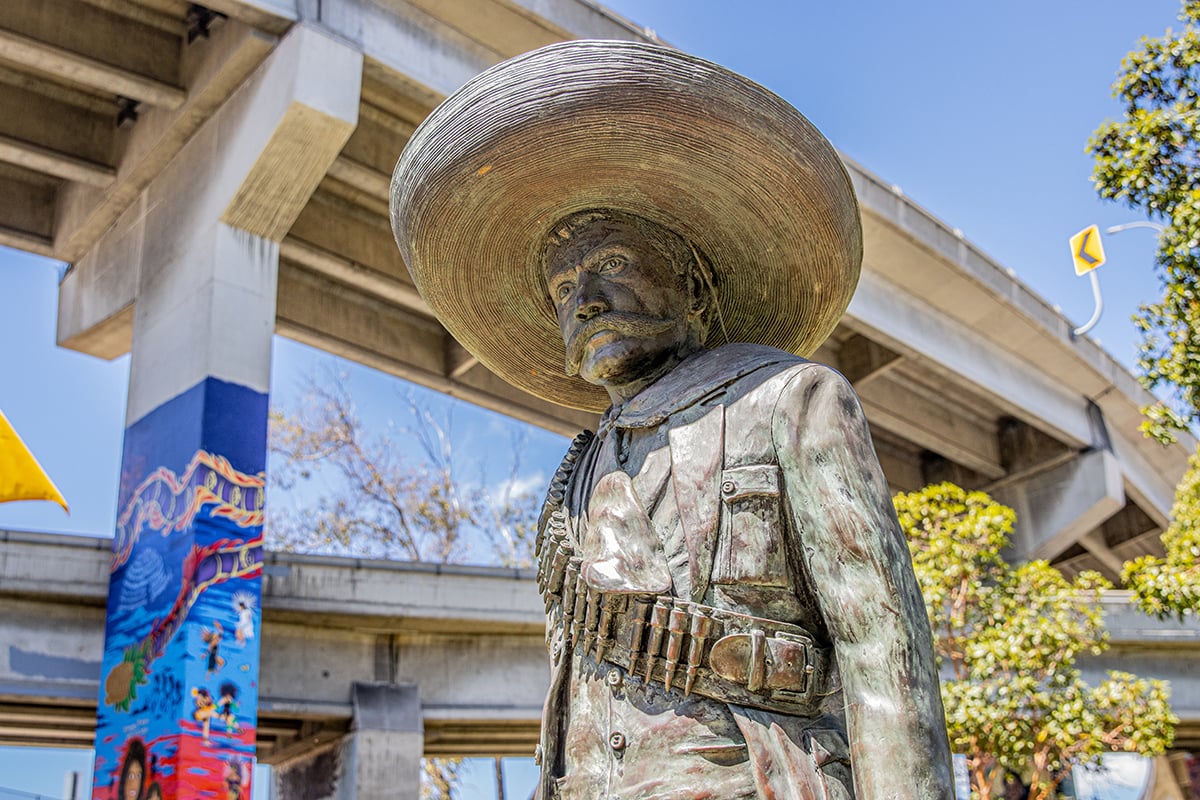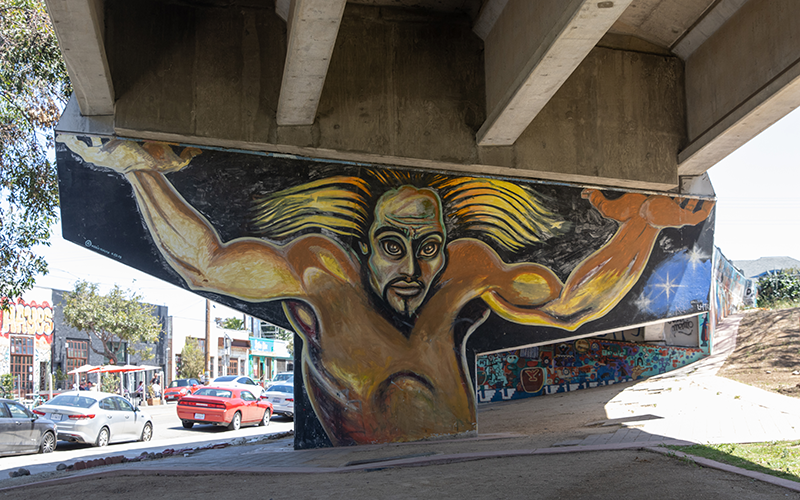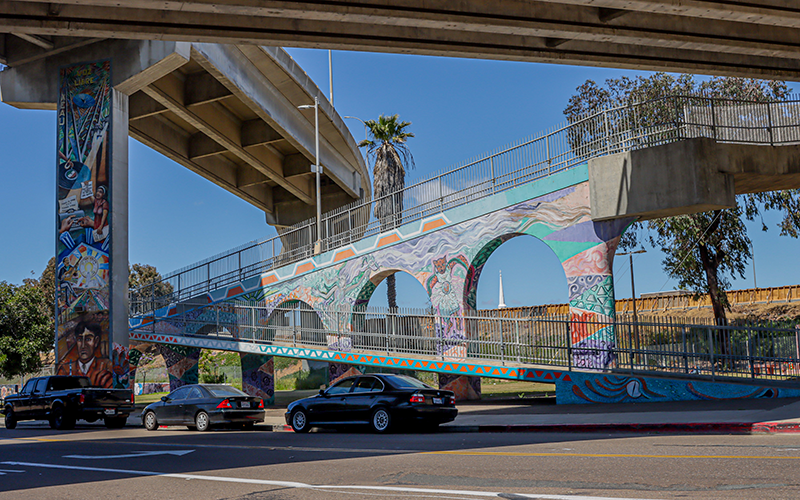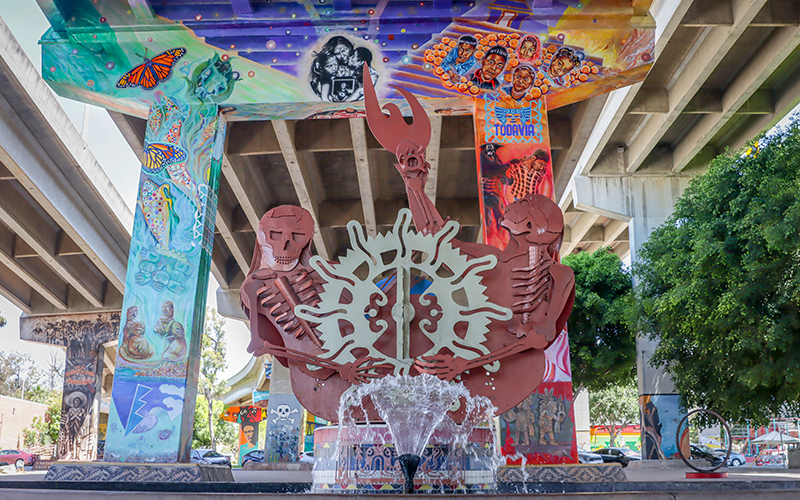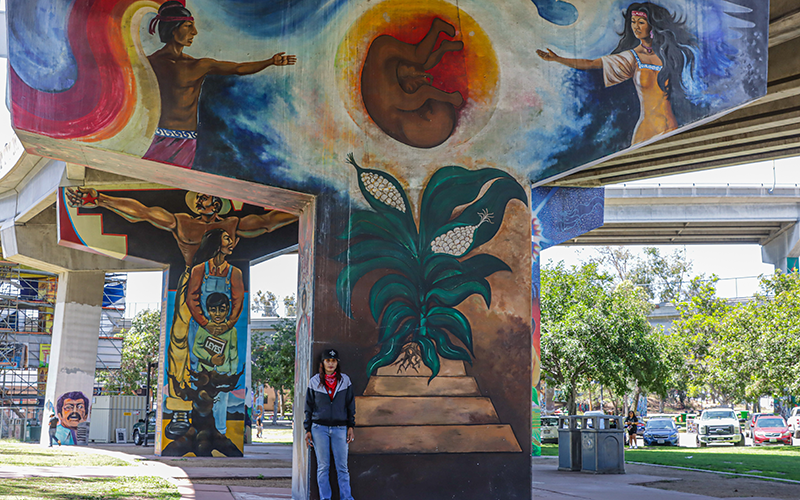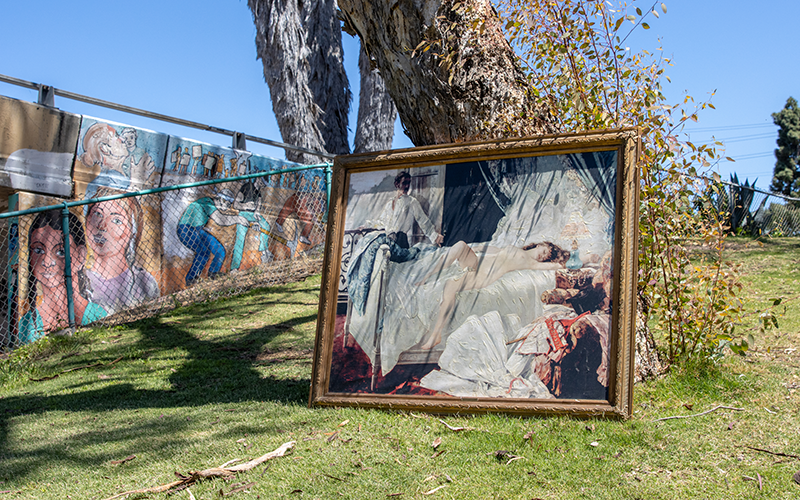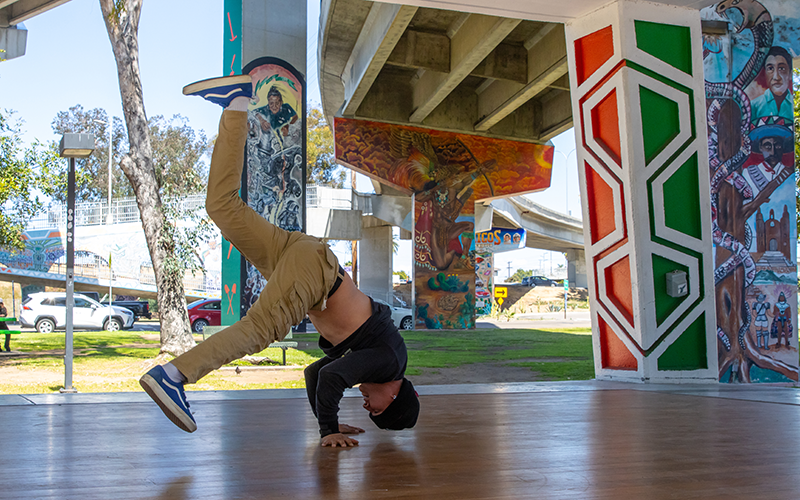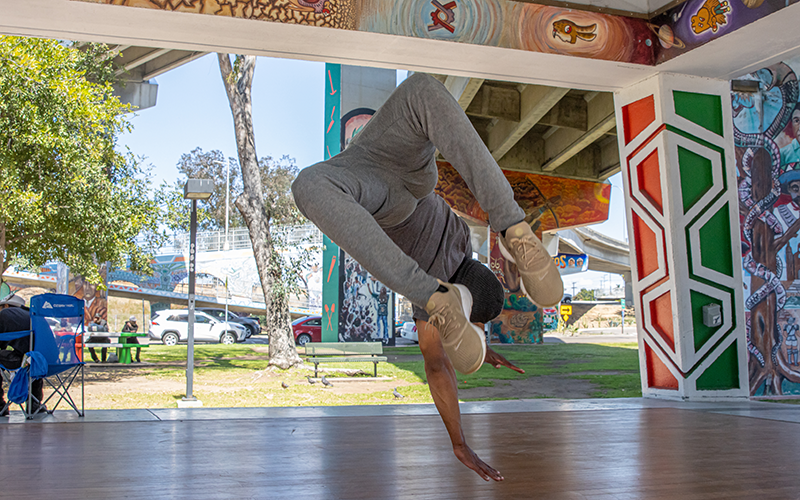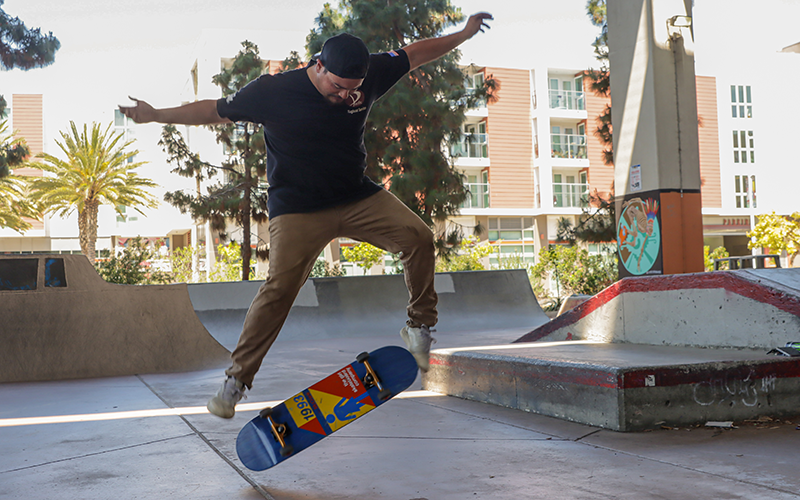Chicano Park, home to the world’s largest concentration of Chicano murals, turns 52
Chicano Park, home to the world’s largest concentration of Chicano murals, turns 52
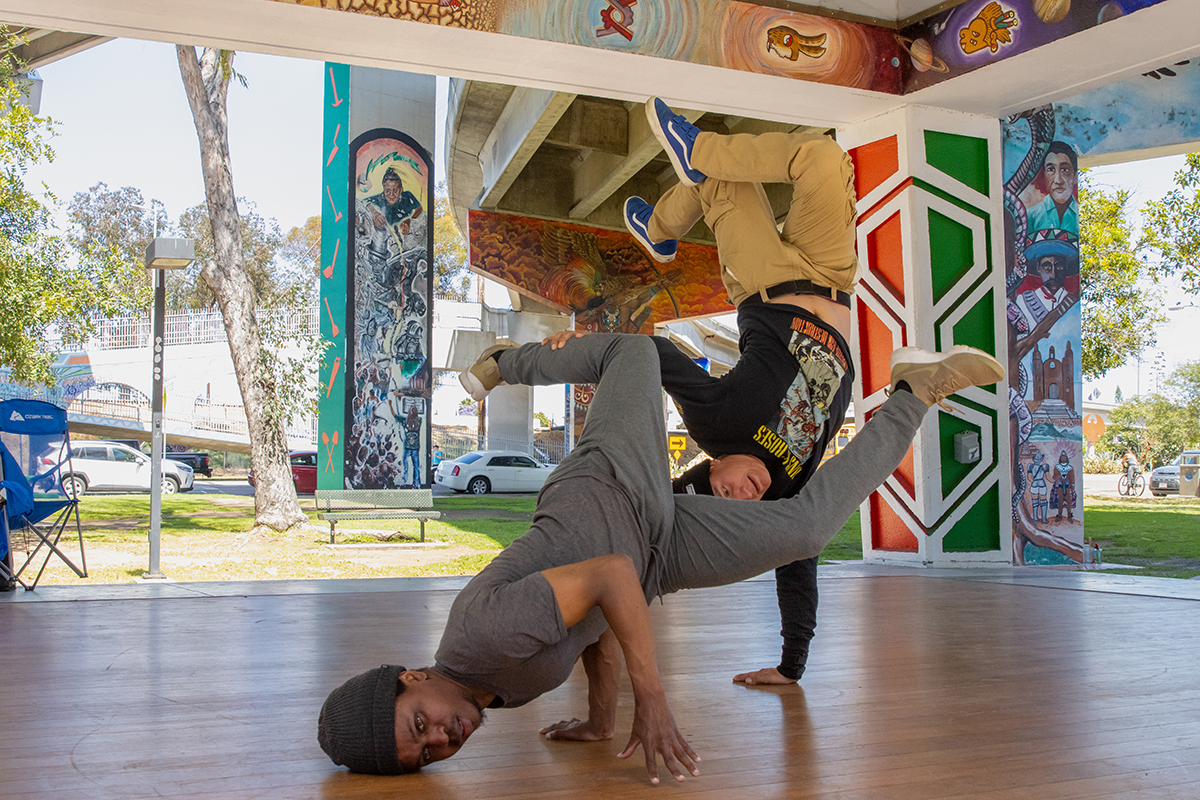
As the sounds of hip hop and soul music vibrate through Chicano Park in San Diego, friends Robert Jones and Ramon Farias practice breakdancing together for the first time in years. The pair were a part of a breakdancing group in high school. “We hope to keep this up and see each other more often, too,” Farias says. (Photo by Lauren Lively/Cronkite News)
